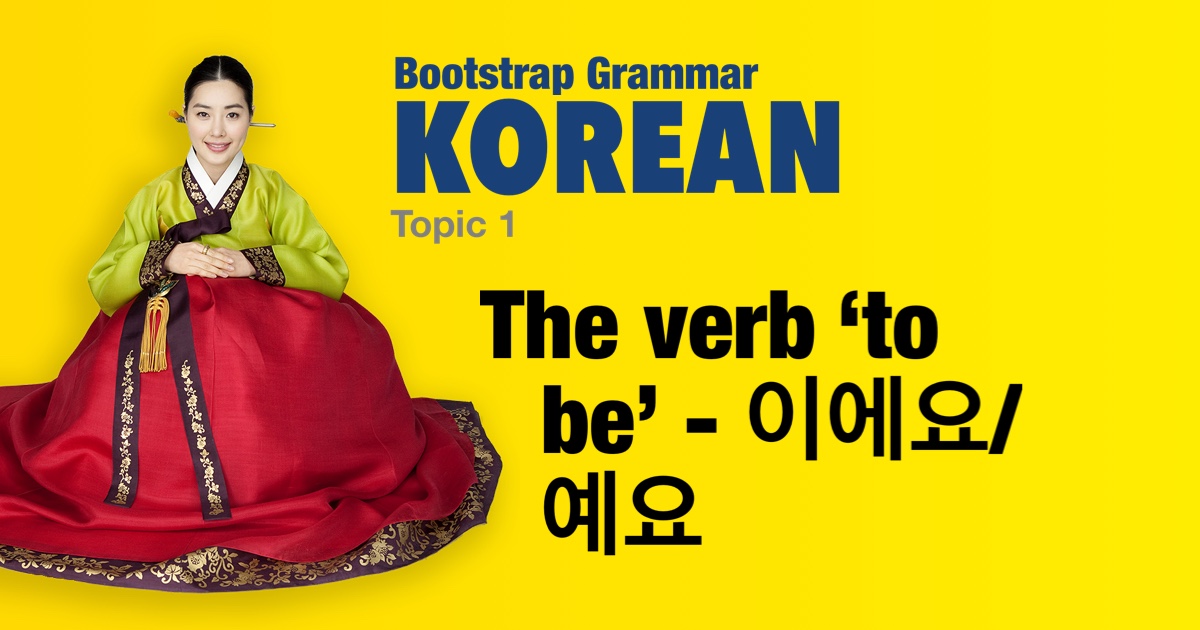Korean grammar - The verb ‘to be’ - 이에요/예요 |
|||
|
|||
Pattern: Noun + 이에요 or Noun + 예요 The Korean verb 이다 means 'to be'. Its present tense forms are 이에요 & 예요. To say A is B we attach one of the two present tense forms of the verb to the object noun B. • We attach 이에요 when the object noun ends with a consonant. • We attach 예요 when the object noun ends with a vowel. In the examples below the subject noun (A) – who or what is doing the verb – is absent. This is common in Korean when it is obvious from the context. |
| Examples: | |
|
학생이에요.
(I) am a student.
|
|
|
겨울이에요.
(It) is winter.
|
|
|
월요일이에요.
(It) is Monday.
|
|
|
나무예요.
(It) is a tree.
|
|
|
누나예요.
(She) is (my) older sister.
|
|
|
강이에요.
(It) is a river.
|
|
|
초콜릿이에요?
Is (it) chocolate?
|
|
|
학생이에요?
Is (he) a student?
|
|
|
서준이에요.
(He) is Seojun.
|
|
|
지아예요?
Is (she) Jia?
|
|
 |
|




